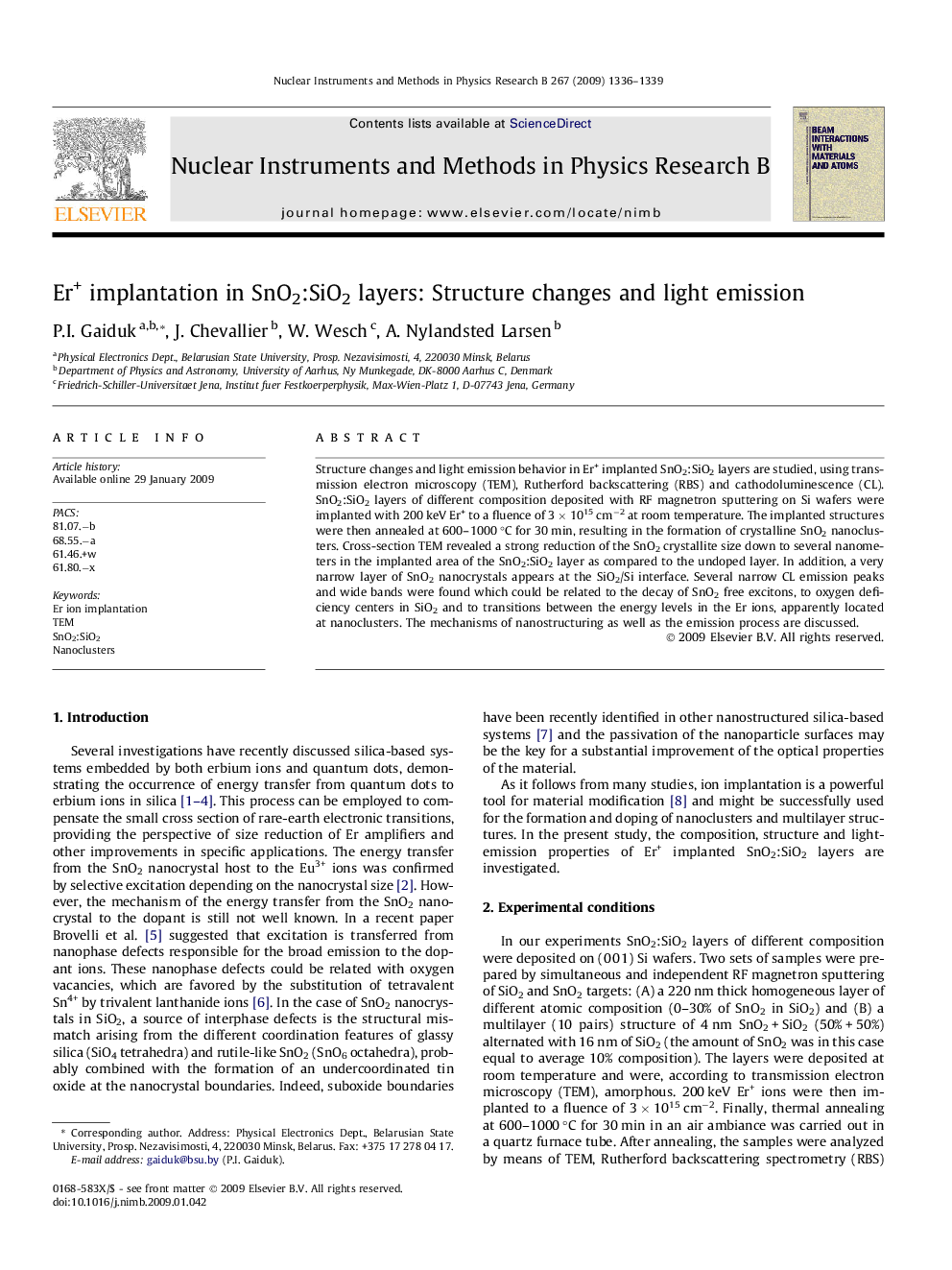| Article ID | Journal | Published Year | Pages | File Type |
|---|---|---|---|---|
| 1683941 | Nuclear Instruments and Methods in Physics Research Section B: Beam Interactions with Materials and Atoms | 2009 | 4 Pages |
Abstract
Structure changes and light emission behavior in Er+ implanted SnO2:SiO2 layers are studied, using transmission electron microscopy (TEM), Rutherford backscattering (RBS) and cathodoluminescence (CL). SnO2:SiO2 layers of different composition deposited with RF magnetron sputtering on Si wafers were implanted with 200 keV Er+ to a fluence of 3 Ã 1015 cmâ2 at room temperature. The implanted structures were then annealed at 600-1000 °C for 30 min, resulting in the formation of crystalline SnO2 nanoclusters. Cross-section TEM revealed a strong reduction of the SnO2 crystallite size down to several nanometers in the implanted area of the SnO2:SiO2 layer as compared to the undoped layer. In addition, a very narrow layer of SnO2 nanocrystals appears at the SiO2/Si interface. Several narrow CL emission peaks and wide bands were found which could be related to the decay of SnO2 free excitons, to oxygen deficiency centers in SiO2 and to transitions between the energy levels in the Er ions, apparently located at nanoclusters. The mechanisms of nanostructuring as well as the emission process are discussed.
Related Topics
Physical Sciences and Engineering
Materials Science
Surfaces, Coatings and Films
Authors
P.I. Gaiduk, J. Chevallier, W. Wesch, A. Nylandsted Larsen,
